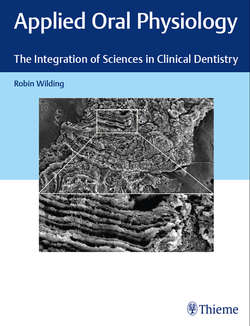Читать книгу Applied Oral Physiology - Robin Wilding - Страница 73
На сайте Литреса книга снята с продажи.
4.3.3 Growth of a Biofilm
ОглавлениеGrowth of a biofilm occurs in three distinct phases (▶ Fig. 4.8).
Adherence to a substrate is the first phase. Generally, hydrophilic (water-loving) surfaces encourage bacterial attachment and hydrophobic surfaces encourage their detachment. Many species of oral organisms produce biosurfactants, which decrease the surface tension of the substrate surface, causing it to become hydrophilic. These biosurfactants are of universal benefit to all species of adhering organism, so the production of them has communal value. The attachments made by organisms onto oral surfaces are either by specific protein adherent sites (ligands) on the bacterial cell membrane or nonspecific polysaccharide attachments via fibrils. Of these two forms of attachment, the fibrillar attachments, though less specific, are stronger than the rather weak but specific ligand connections.
Aggregation is the second phase of growth in which organisms clump together to form a complete layer. Aggregation may involve the adhesion of different species to each other. Two species which adhere to each other are P. gingivalis and Streptococcus gordonii. They also have significant levels of intercommunication which share changes in gene expression which prepare for a community existence in the biofilm. The partnership of these two species may become significant in orchestrating the early stages of gingivitis and periodontal disease.
The third phase of biofilm growth is the rapid increase in number of organisms. The concentration of organisms in a biofilm is likely to be 10,000 times greater than their concentration in planktonic form. This shift between a solitary planktonic existence, and a dense biofilm, requires some major adaptations of the bacteria which are achieved by gene regulation. This gene regulation is triggered by chemical messengers from other organisms, an example of quorum sensing (see Appendix D.4 Gene Regulation in Biofilms).
The benefits of existence in a biofilm as distinct from a floating (planktonic) existence in water are significant. The biofilm provides shelter, accommodation, food sharing, stability, and continuity. Planktonic bacteria are vulnerable to quite low concentrations of toxic chemicals (disinfectants). Bacteria in a biofilm are protected by the outer layers of organisms and very resistant to even high levels of disinfectant. The biofilm is only reliably disrupted by mechanically scraping or brushing it of the surface it is attached to (see Appendix D.5 Strategies for Controlling Biofilms).
